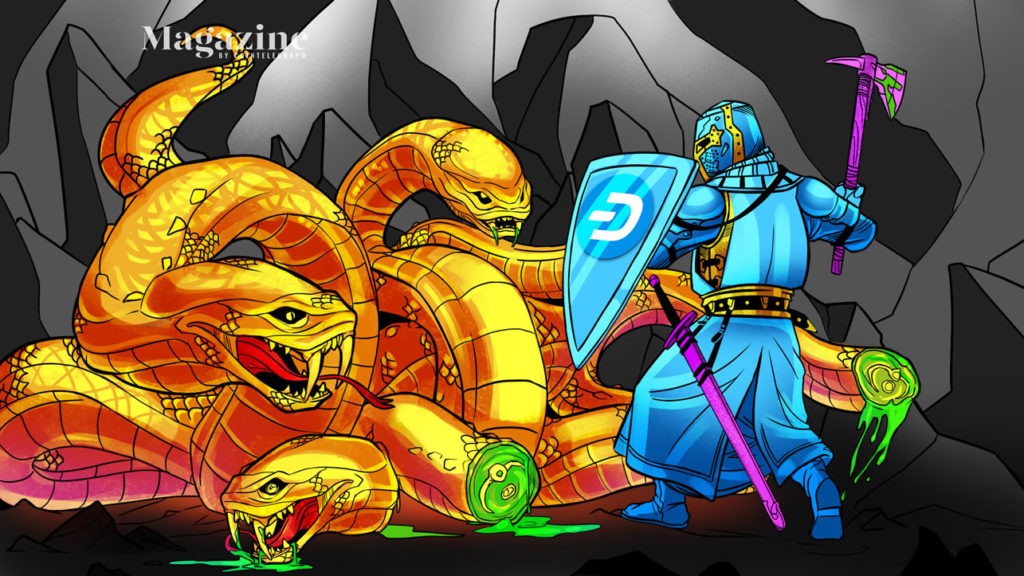Remote work may be the standard for many knowledge-workers during the time of COVID-19, but ‘remote’ and ‘decentralized’ are two very different concepts.
Many companies, particularly in the knowledge-rich and tech-savvy blockchain space, work with their team members dispersed around the globe. Binance CEO Changpeng Zhao memorably noted that “Office and HQ are old concepts like SMS and MMS.”
But most companies still have a hierarchy, a clear understanding of who does what. Titles. Responsibilities. KPI’s. Some hold the purse, and others test the strength of the strings.
Doing business with another company is a time-honored and battle-tested process, and often one that begins with a contact at the other business. Plenty of businesses hire specifically because of the contacts the new employee brings with them.
But what about working with truly decentralized organizations… or even nebulous-sounding ‘protocols’ such as Ethereum, Dash or Tezos?
Where does a traditional service-based company begin if they want to provide their services, when nobody holds the title they’re used to searching for on LinkedIn?
The Growth of Decentralized Organizations
Cryptocurrency has hammered home the concept of decentralization like never before. Bitcoin may have led public awareness, but behind the scenes companies and even governments are adopting the tenets of distributed ledger technology.
As the blockchain space has grown, and as Big Tech has consolidated power through data acquisition and marketing, the discussion around decentralization has stretched far beyond the transfer of value to governance, decision making, and organizational structure.
Decentralized Autonomous Organizations (DAOs) are not the only form of decentralized business, but they are increasingly relevant in the blockchain space as participants realize that they can increase efficiency through automation. They have established rules and policies that are specified and even executed by code without the need for management intervention. The process is transparent and recorded on the blockchain for anyone to review.
Tom Shaughnessy of Delphi Digital, a crypto asset research firm, says “The promise of DAOs is their ability to drive organization and coordination in a trustless way without a leader or set management. This would be a sea change from the way businesses, government and every organization operates today.”
“Decentralized organizations have the potential to make a huge impact on how communities and groups of people are organized and collaborate in the future. Working with a decentralized organization is nothing short of a new world. A team has to be able to convince a community of stakeholders that their services are valuable, not a C-suite executive or one decision-maker,” Shaughnessy explains.
Although decentralized organizations may seem leaderless, a glance sideways may offer a hint on how to to business with them. While governance ultimately resides with the stakeholders, community organizations and Foundations often support the development and marketing of the project.
These Foundations, in particular, often wield outsized influence on decentralized projects. The Tezos Foundation held over $600M in assets in March 2020, while major blockchain players such as Cardano and the IOTA protocol are supported by the Cardano Foundation and the IOTA Foundation, respectively.
In Cardano’s case, three organizations contribute to the development of the peer-reviewed project — Input Output HK and Emurgo (a for-profit business) are the other two. A glance at their organization charts makes it clear that even within a decentralized project, there are still clearly defined roles: the Foundation has a PR and Marketing Director, an HR and Finance Manager, and a Chairperson. Within IOHK, six C-suite officers are clearly identified. And Emurgo similarly lists its top tier executives, with convenient icons for contacting them via Twitter and LinkedIn.
For traditional companies these oddly-configured hybrids of commercial organizations, non-profit Foundations (often based in Switzerland) and solo open-source developers may be challenging, as Kenneth Garofalo, Boston Chapter President at Tezos Commons, explains.
Working with Tezos
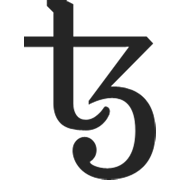
Tezos Commons focuses on building the Tezos community, and Garofalo admits that traditional service-based companies “may find it a bit confusing” as to how to approach working with them.
He says, “The Tezos ecosystem is very decentralized due to lack of traditional hierarchies and departments. To overcome any uncertainties, the prospect should be willing to take time and learn the Tezos ecosystem from the Bakers securing the network, to the Tezos Foundation, to the companies that receive grant money, and to the many prospering community groups. Once this prospect identifies the part of the ecosystem they need to deal with, then they will find traditional hierarchies and departments can exist within those individual organizations.”
To make it easier for independent PR firms already familiar with Tezos, Garafalo has created a PR and Marketing firm called Block Relations that can “help design a plan of best action for the process”.
He goes on to explain that the only business that goes directly through the Tezos Foundation is “grant making services and facilitation of industry adoption. Depending on what the prospect needs, they may have to deal with the Tezos Foundation. It is important to note that anyone can build on Tezos as the protocol is open source.”
Garafalo admits that there are some components of traditional organizations that can prove challenging with a decentralized setup. “Cohesion, clarity, and trust, along with proper incentives, can be tough to come by in a decentralized organization without careful planning. Some of those aspects are commonplace within centralized organizations and can definitely be taken for granted.
With a decentralized organization there is no calm of a big brother looking out for you, there is mostly a fight to survive feeling and a bond amongst those in the battlefields with you. In my opinion, this can be an advantage for decentralized organizations as it may inspire more creativity with individual reputations on the line.”
But he maintains that “Formalized structure and governance guidelines can be more trusted when operating rules are programmed. This can also help in situations where a workforce is not centrally located. In a digital age, we need to have digital solutions and a decentralized structure such as a DAO can provide that.”
Working with Dash
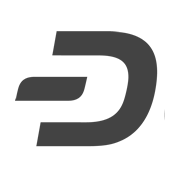
Perhaps due to its longevity in the space, Dash is somewhat easier for external companies to work with. Wiecko says, “Anyone can submit a proposal for an anti-spam fee of 5 Dash, and the proposal may be funded if it gets enough masternode votes.”
DASH has lost significant value from its all-time-high and is currently trading at around $70. Still, that means that in order to work with the organization external suppliers have to be prepared to stump up just over $350 to submit a proposal. At its peak in Feb 2018, one DASH was trading at almost $1,500. That type of upfront fee may be off-putting to outside companies whose proposals may not get voted in.
At Dash, the decisions are made by the network, Wiecko explains. By network, he means the owners of masternodes. This governance system allows each masternode to vote once (yes/no/abstain) for each proposal.
Wiecko says, “During the month, anybody can make a budget proposal to the network, using network-driven websites like DashNexus. If that proposal earns the net approval of at least 10% of the masternode network, then at the end of the month the requested amount will be paid out in a “superblock”.
At that time, the block rewards that were not paid out (10% of each block) will be used to fund approved proposals. The network thus funds itself by reserving 10% of the block reward for budget projects… The owners of the winning proposals receive payment directly from the superblock to the address they specify when submitting the proposal.”
On the subject of payment, he goes on to explain that “there is no Foundation or intermediary entity handling the transfers. Trusted escrow service providers exist to handle cases where there is uncertainty around the ability for a contractor to deliver a high-value or time-consuming proposal with delivery milestones.”
Looking at the DashNexus page, you can see the proposals submitted and how many votes they have garnered — including a U.S.-based PR firm requesting renewal of a six-month contract. So although it’s not as simple as picking up a phone or writing an email, it does show that it is possible to work with this type of company. And once you’ve gone through the original hurdles, payment is automatic and frictionless.
Working with Ethereum
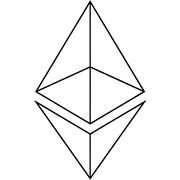
Shaughnessy explains, “Anyone with a laptop and an internet connection can submit a MolochDAO proposal to work in the Ethereum ecosystem or propose a service on and these proposals are voted on by the community stakeholders in a truly decentralized way.”
MolochDAO members currently help each other post proposals and to post a proposal, you must first find an existing member. Then you’ll need to follow a series of complex steps including setting up a hardware wallet, adding funds, and asking an existing member to submit your proposal.
Needless to say, you have to be extremely motivated to want to provide your services via MolochDAO.
The Ethereum.org website is a resource for individuals and companies looking to work within the project ecosystem. Drilling down into the site’s footer for access to the Community page, you’ll find notes such as “The Ethereum community includes people of many different backgrounds and skill sets. Whether you’re a developer, an artist, or an accountant, there are ways to get involved.”
It turns out most of those ways — at least for non-developers — involve visiting links to external companies building on the Ethereum blockchain, or heading to one of the dozens of Meetups listed. Marketing experts are directed to their own DAO. So perhaps it’s no surprise that Product Managers are directed to the Ethereum Cat Herders Community.
Zcoin: what decentralization looks like from the inside
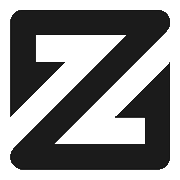
“Despite the lack of hierarchy”, he says, “leaders naturally arise to take charge of various aspects. Especially those people that have the initiative to move things forward. Because no one has a ‘superior’, a leader must gain buy-in from at least the majority of other teammates for a decision to be made. Therefore, leaders need to elaborate more on the reasoning behind their decisions to reach a consensus.”
“In traditional structures,” he continues, “the superior, or boss, is making the decisions for a wide range of matters. In a decentralized organization, this decision-making is more fluid, as different people will be ‘leaders’ in different arenas depending on their skill set and the component of the project they are working on. As a whole, decentralized organizations encourage collective decision-making and consensus-seeking rather than clearly defined processes and structures. Influence is earned by contributions and knowledge, and by being personable, not by rank or hierarchy.”
Yap concedes that there are always issues with this type of decentralized structure. For example, opposing views can lead to deadlock with no decision being made. It can also be hard to ensure that each individual is self-motivated and contributing their share of work.
“Sometimes where there is no ‘boss’ there can be issues with discipline when the group functions more like freelancers than employees. This is a real issue, especially if work is halfway done and someone else must take and effectively start from scratch… My role as COO and Project Steward is to manage these priorities and to resolve any conflicts that are preventing things from moving forward.”
The future of work?
Traditional service-based companies can work with decentralized organizations and protocols, but they have to adjust their method of doing business and put in some extra legwork.
The additional time and research may be off-putting for companies used to making new connections quickly. But as the technology evolves, so will the ease of working with decentralized companies, foundations, and DAOs — and the barriers and requirements for submitting proposals may become more user-friendly.
When asked if he thinks we’ll see more decentralized organizations in the future, Shaughnessy has no doubt.
“It’s already happening in a way, but it’s very early. The days of punching in and out when you get to work are fading. In the future, individuals may work remotely for several DAOs at a time, and the DAOs may even reach out to them to solicit their work.”
Well, that sounds easier.
Hong Kong hoses down stablecoin frenzy, Pokémon on Solana: Asia Express
